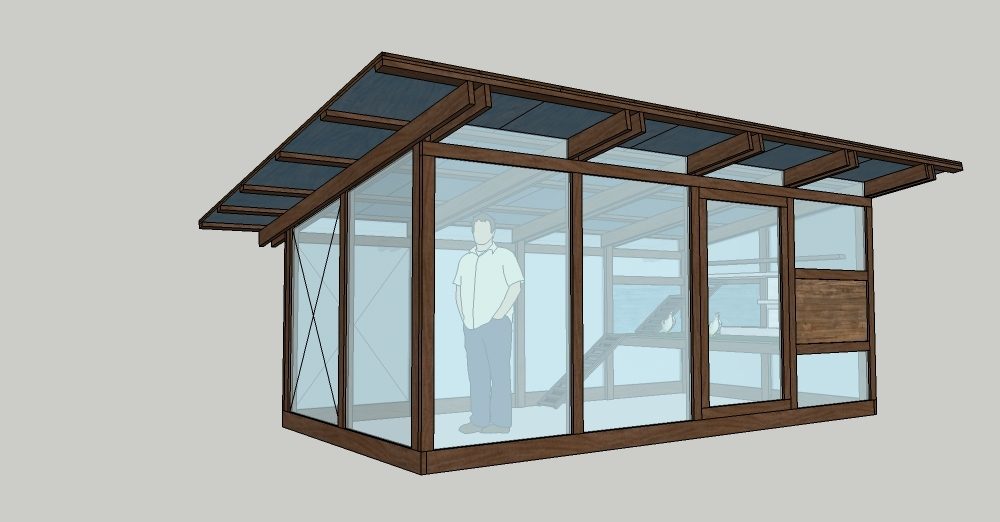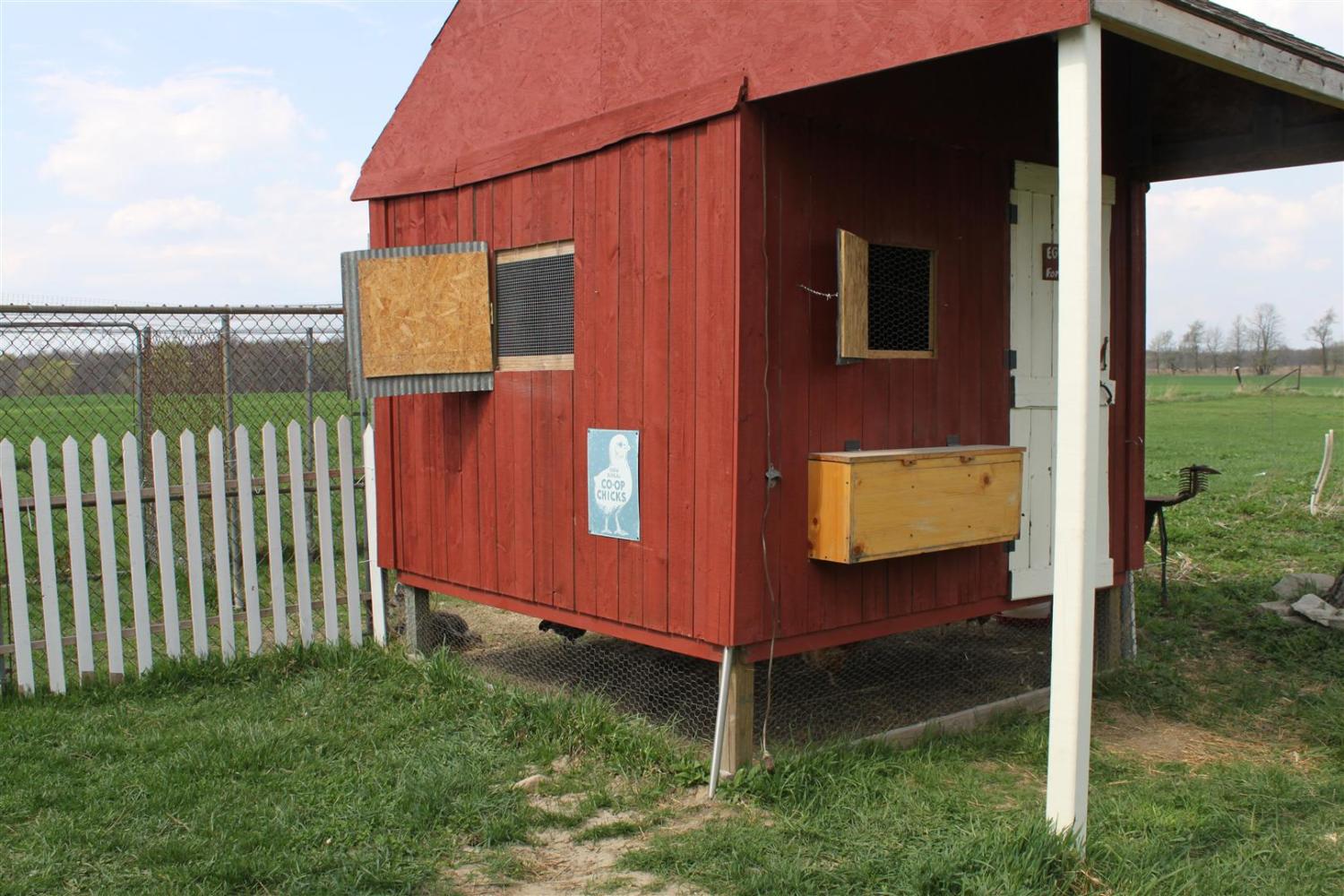Greetings Chicks, Hens, Roo's and whatever else is in between.
First timer here. I've been wearing this site out recently, as my wife and I decided to be adopted by a family of chickens. Current tally is 4 chicks, with 5 more coming. I'd love some feed back from y'all on my coop design. Here is some information with images attached.
Who: Up to 9 chickens, depending on the rooster outcome. Breeds are silkies, Maran, Polish, Cochin, maybe a Wyandotte or a d'uccle. ( My wife handles the acquisitions )
What: Coop
Where: North of Houston about 2 hours. HOT HOT HOT, humid summers. Winters ( a week long chilly bit in january ) are not very cold at all. The spot we picked for them will get lots of shade and should only have direct sun mid mornings for a little while.
) are not very cold at all. The spot we picked for them will get lots of shade and should only have direct sun mid mornings for a little while.
When: Soon.
Why: I have already asked my self that. No good answer as of yet...
I'm planning on stained or painted treated wood, some sort of flooring on the raised areas (linoleum), hardware cloth. probably a radiant barrier plywood sheathing under a metal roof to help keep the heat at bay.
Current size is 128 sf. 8x16.
6 nest boxes.
roost over poo board with ramp access for silkies.
little box to the side of the nesting boxes is a contingency plan in case the silkies prefer the face plant method. will probably hang the feeders and install the nipple waters under the first raised level.
So..... What do you think? Suggestions? Improvements? Complete cock-ups? (chicken puns = fun)
Thanks in advance.
J



daughter with a sizzle? maybe? again talk to the acquisitions department.

First timer here. I've been wearing this site out recently, as my wife and I decided to be adopted by a family of chickens. Current tally is 4 chicks, with 5 more coming. I'd love some feed back from y'all on my coop design. Here is some information with images attached.
Who: Up to 9 chickens, depending on the rooster outcome. Breeds are silkies, Maran, Polish, Cochin, maybe a Wyandotte or a d'uccle. ( My wife handles the acquisitions )
What: Coop
Where: North of Houston about 2 hours. HOT HOT HOT, humid summers. Winters ( a week long chilly bit in january
 ) are not very cold at all. The spot we picked for them will get lots of shade and should only have direct sun mid mornings for a little while.
) are not very cold at all. The spot we picked for them will get lots of shade and should only have direct sun mid mornings for a little while.When: Soon.
Why: I have already asked my self that. No good answer as of yet...

I'm planning on stained or painted treated wood, some sort of flooring on the raised areas (linoleum), hardware cloth. probably a radiant barrier plywood sheathing under a metal roof to help keep the heat at bay.
Current size is 128 sf. 8x16.
6 nest boxes.
roost over poo board with ramp access for silkies.
little box to the side of the nesting boxes is a contingency plan in case the silkies prefer the face plant method. will probably hang the feeders and install the nipple waters under the first raised level.
So..... What do you think? Suggestions? Improvements? Complete cock-ups? (chicken puns = fun)
Thanks in advance.
J




daughter with a sizzle? maybe? again talk to the acquisitions department.

Last edited:

